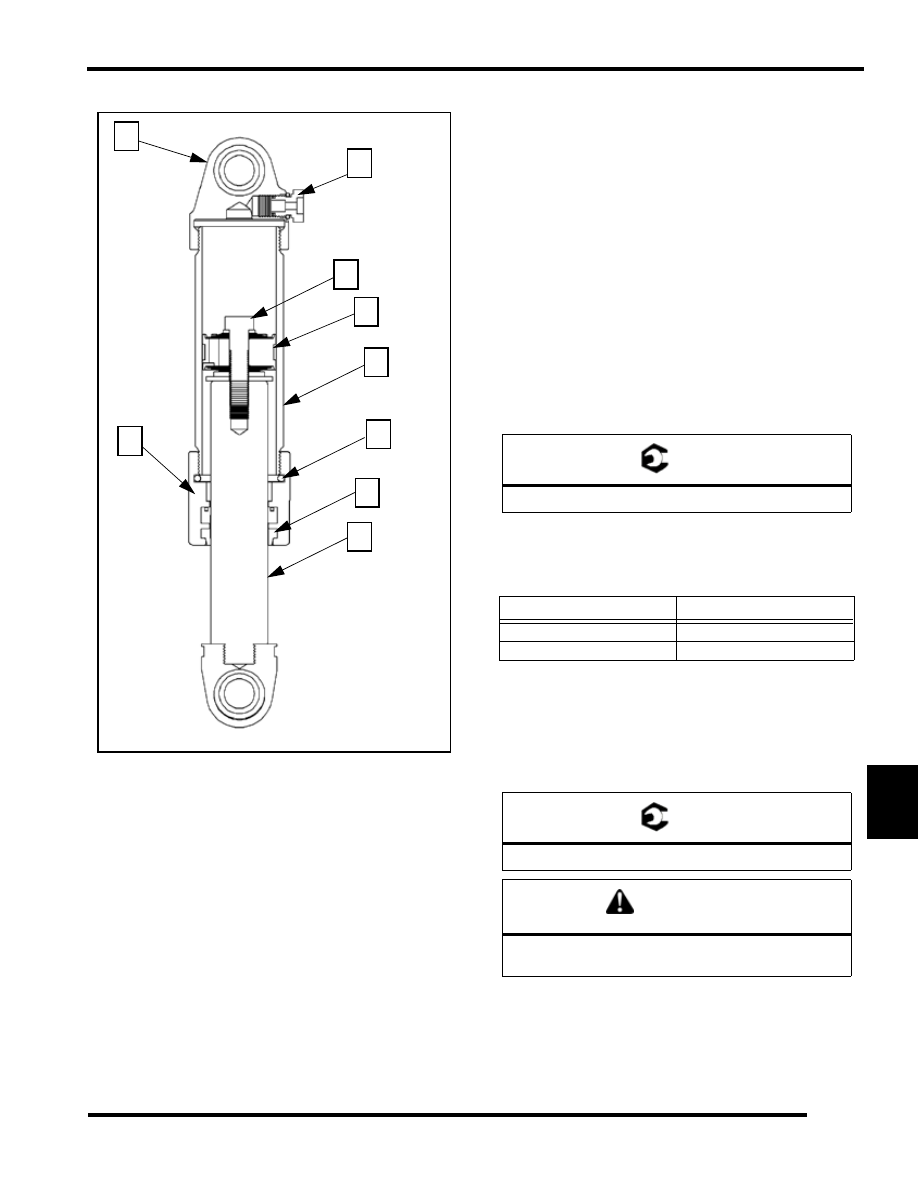Snowmobile Polaris Two Stroke (2007 year). Instruction - part 62

9.31
REAR SUSPENSION
9
Walker Evans Shocks (7043234, 7043233)
This type of shock has some critical servicing items that you will
need to address when servicing these shocks. There are three
ways that you can adjust the performance of the shock; by
adjusting the shim stack, adjusting the fluid level and adjusting
the pressure.
Shim stacks can be adjusted just like any other shock.
Nitrogen pressure must be 215 psi (14.8 bar) for these shocks
(7043234, 7043233).
Fluid level must be at 70cc for the front track shock and 95 cc
for the IFS shock.
IMPORTANT: Some important notes when rebuilding
these shocks are listed in bullet points below.
• Protect the shock rod with supplied sleeve when
removing or installing the shock on the vehicle.
• When charging or discharging the shock always have
the shock rod facing downward.
• Fluid level and Nitrogen pressure are critical.
1.
Place the body cap (1) of the shock in the vise so that the
shock rod (2) is facing downward.
2.
Remove the service port screw (3) and release the pressure
with the shock charging needle.
3.
Make sure that all pressure is out of the shock or oil may
spray out in step 5.
4.
Place the body cap (1) in the vise, so that the shock rod (2)
is facing upward.
5.
Slowly loosen the shock rod bearing cap (4) and remove it
from the shock.
6.
Empty all the shock oil from the shock body and discard
the old oil.
7.
At this time you can service or adjust the valve stack (5) as
needed.
8.
If service or adjustment was done at this time torque the
piston retaining bolt (6) to 25-30 ft-lb (34-41 N-m).
9.
If needed remove the body cap and install a seal (7)/O-ring
(8) kit.
10. Place the specified amount of fluid into the shock body.
IMPORTANT: Be sure to only insert the required
amount of 5wt shock fluid -2cc / + 1cc. If more than the
specified amount is inserted shock damage will
occur.
11. Insert and torque down the shock rod assembly into the
shock body (9) to 85 ft-lb (115 N-m).
12. Flip shock over in the vice so that the shock rod is facing
downward.
13. Pressurize the shock to 215 psi (14.8 bar).
IMPORTANT: Fill shock with Nitrogen to 215 psi (14.8
bar). Do not fill the shock and re-check. The volume in
3
1
6
7
2
9
4
5
8
= T
Piston retaining bolt: 25-30 ft-lb (34-41 N-m)
S
HOCK
PN
F
LUID
L
EVEL
7043234 (FTS)
70cc
7043205 (RTS)
95cc
= T
Body Cap Torque: 85 ft-lb (115 N-m)
CAUTION
Do not over torque the shock rod bearing cap or
shock performance will be compromised.